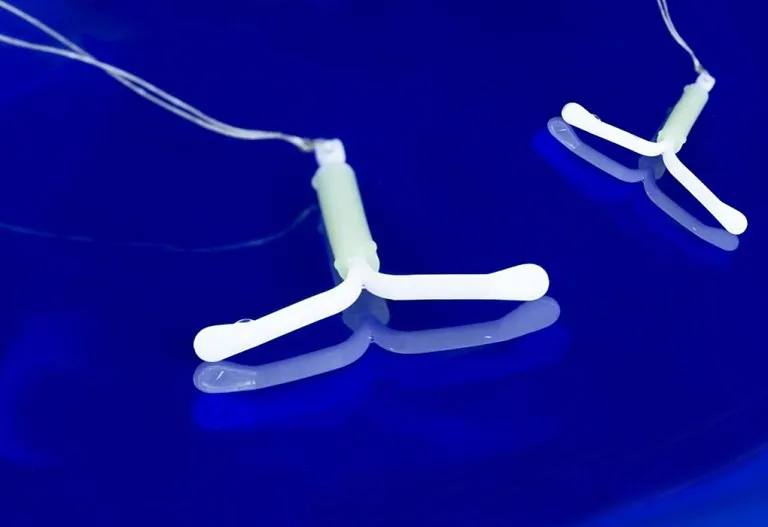Miscarriage Bleeding – Causes, Symptoms and Treatment

A miscarriage is the loss of a pregnancy before the twentieth week. A miscarriage is no doubt a devastating event and heart-wrenching, especially when you have been preparing yourself to welcome the new member into the family. Unfortunately, but proven from research, 10%-20% of pregnancies end in miscarriages. While a miscarriage is common, it can be extremely painful and cause of grief for a mother, both physically and emotionally. The process of dealing with it involves a lot of mental and physical courage and well-sought medical advice. It is completely normal to experience pain and bleeding after a miscarriage. But as every natural illness that affects the body, miscarriage is also a phenomenon that your body can deal with. This article will help you know a little more about miscarriage bleeding.
What Does Miscarriage Bleeding Look Like?
Vaginal bleeding is the most common sign of a miscarriage. It can be very light in colour, almost close to spotting and nothing more at times, but the bleeding can be much heavier than a normal period, too. These signs of miscarriage bleeding might last for a few days or even a few weeks. The bleeding could also be characterised by blood clots, either large ones or small ones or even discharge that looks like tissue. Continued bleeding after miscarriage could also be accompanied by cramping. You may experience pain in your abdomen, either light pain or heavy pain, almost alike contractions experience during labour. There are also instances when pregnant women have had a miscarriage without any signs of bleeding; they come to know about the death of the foetus during a routine ultrasound but have had no bleeding to warn them (1).
Causes of Miscarriage Bleeding
Miscarriage bleeding is a common and distressing experience for many women, often occurring during the first trimester of pregnancy. Understanding the potential causes can help in identifying risks and seeking appropriate medical care (2).
- The most common cause of miscarriage is genetic issues in the embryo that prevent proper development.
- Conditions like low progesterone levels can disrupt the pregnancy.
- Bacterial or viral infections, such as listeria or rubella, can lead to miscarriage.
- Structural issues in the uterus, like fibroids or a septate uterus, may interfere with implantation.
- Diabetes, thyroid disorders, or autoimmune diseases can increase miscarriage risk.
- Smoking, excessive alcohol consumption, or drug use can contribute to pregnancy loss.
- Women over 35 have a higher risk of miscarriage due to declining egg quality.
- Physical trauma to the abdomen can sometimes trigger a miscarriage.
- Conditions like antiphospholipid syndrome can affect blood flow to the placenta.
- Exposure to harmful chemicals or radiation may increase the risk of miscarriage.
Types of Miscarriage Bleeding
Miscarriage bleeding can vary significantly in its presentation, depending on the type of miscarriage and the stage of pregnancy. Below are the common types of miscarriage bleeding explained in detail (3).
1. Threatened Miscarriage
In this type, light vaginal bleeding or spotting occurs, but the cervix remains closed. While the pregnancy may continue, it is essential to monitor symptoms and seek medical advice to rule out complications.
2. Inevitable Miscarriage
This involves heavy bleeding, often accompanied by cramping and an open cervix. The pregnancy cannot be sustained, and medical intervention may be required to manage the bleeding from miscarriage and ensure complete expulsion of pregnancy tissue.
3. Incomplete Miscarriage
Bleeding is heavy and may include passing clots or tissue, as not all pregnancy-related material has been expelled from the uterus. Signs of incomplete miscarriage bleeding include a dilated cervix, heavy bleeding (soaking one pad in an hour), the presence of tissue in the uterus confirmed by ultrasound, severe cramping and pain, water retention, and flu-like symptoms. The uterus cannot heal if there are some remains which need to be cleared surgically. Medical treatment or a procedure like a D&C (dilation and curettage) may be necessary.
4. Complete Miscarriage
This occurs when all pregnancy tissue is expelled from the uterus. Bleeding may be heavy initially but gradually tapers off. A follow-up with a healthcare provider is recommended to confirm the completion of the miscarriage.
5. Missed Miscarriage
In this type, there is no noticeable bleeding initially, as the body has not yet recognized the pregnancy loss. However, light bleeding or spotting may occur later, often accompanied by a lack of pregnancy symptoms. Ultrasound confirmation is typically required.
How Long Does Miscarriage Bleeding Last?
The uterine mucosa, which gets damaged after a miscarriage, causes bleeding and abdominal pain. This bleeding generally lasts only for about two weeks. The severity of the bleeding could differ in women. It could be barely noticeable or severe, but the symptoms are often similar to those of a menstrual period. It is advisable to use pads to mitigate the risk of infection as tampons are not very hygienic to stem the bleeding.
If you use more than one pad in an hour, then you need to immediately seek medical advice. Changing a pad every hour indicates the potential for haemorrhage (refer abnormal bleeding below for some more information). Severe bleeding may require surgery or a blood transfusion to stay healthy.
Miscarriage bleeding generally does not last for more than two weeks. Bleeding which lasts for more than two weeks calls for a visit to the doctor. It could mean an incomplete miscarriage that might need your tissue has to be expelled. The doctor will need to determine it is an incomplete miscarriage and suggest a surgical procedure to correct the problem. We shall talk more about an incomplete miscarriage in the article below.
Your periods will normally come back to their normal cycle within 3 weeks to 5 weeks after a miscarriage.
What Is Abnormal Bleeding After Miscarriage?
Bleeding that occurs for more than two weeks after a miscarriage is considered abnormal and needs medical attention. An incomplete miscarriage signifies that all of the tissue is not passed completely and requires medical intervention. Most bleeding tapers off, becomes lighter and scant quickly after a miscarriage. If you saturate a pad every hour, then it is a warning sign and should be investigated.
Complications of Post-Miscarriage Bleeding

There are some complications associated with miscarriage bleeding. Low red blood count, anaemia, is one of the most common complications. In very rare cases, a low blood count could call for blood transfusion. Any infection in the uterus which remains untreated could cause a scarred tissue inside the uterus and fallopian tube, causing interference in future pregnancies. Choriocarcinoma, a rare cause of bleeding after a miscarriage, is cancer that stems from a placental tissue or following a molar pregnancy, in which the placental tissue develops into an abnormal mass (4). This is generally treated via chemotherapy.
How to Diagnose Miscarriage Bleeding
Diagnosing miscarriage bleeding involves a combination of clinical evaluation, imaging, and laboratory tests to determine the cause and extent of the bleeding. Below are the key steps used to diagnose miscarriage bleeding (5).
1. Medical History and Physical Examination
The healthcare provider will review your medical history, including any previous pregnancies or miscarriages, and perform a physical exam to check for signs like cervical dilation or tenderness.
2. Ultrasound Scan
An ultrasound is the primary tool to confirm the viability of the pregnancy, check for a fetal heartbeat, and determine if any pregnancy tissue remains in the uterus.
3. Blood Tests
Blood tests, such as measuring hCG (human chorionic gonadotropin) levels, can help assess whether the pregnancy is progressing normally or if a miscarriage has occurred.
4. Pelvic Exam
A pelvic exam may be conducted to evaluate the cervix and check for signs of bleeding, tissue passage, or infection.
5. Additional Tests
In some cases, further tests like genetic analysis of pregnancy tissue or tests for underlying conditions (e.g., blood clotting disorders or infections) may be recommended to identify the cause of the miscarriage.
Treatment for Abnormal Bleeding After a Miscarriage
Treatments differ according to the type of miscarriage. In some cases, doctors suggest medications be administered orally or vaginally to help the miscarriage progress naturally. This will help the placental tissue pass faster within a couple of weeks. If a doctor diagnoses a piece of left-over tissue from the miscarriage in the uterus, he or she might perform a dilation and curettage, commonly referred to as D&C. The procedure is conducted under general anaesthesia, where the uterus is scraped of any tissue remains (6).
Management of Bleeding After Miscarriage
It’s important to take the right steps for bleeding and miscarriage. Once you have suffered a miscarriage, the bleeding will take a while to stop completely. It is best not to insert anything into your vagina, and sanitary pads are the best and most hygienic options to stem the flow of blood. Complete rest and lots of sleep are advised, and you could take over-the-counter painkillers to manage pain. The body must clear all the contents of the uterus, and any left-over pregnancy tissue could lead to an infection. You must rush to your doctor if you experience the following symptoms:
- Bleeding that lasts longer than two weeks.
- Severe cramping and pain.
- Heavy bleeding than normal.
- Fever or flu-like symptoms.
- Foul-smelling or unusual vaginal discharge.
Managing Life Once the Bleeding Stops

A miscarriage is not just painful for the body but to the mind, too. It will take you a while to recover from the loss. But it is not impossible to move forward, and there are ways to help you overcome the setback (7).
1. Physical Recovery
There is no doubt that the uterus is under stress after a miscarriage. In the case of an incomplete miscarriage, the uterus has to undergo a surgical procedure, and it will take some time to heal. The primary step to recovery after a miscarriage is adequate rest. Many women heal faster and can conceive in a month after suffering a miscarriage. But, in some cases, it could take a year. Let your body heal completely before you plan your next pregnancy.
2. Emotional Recovery
The psychological impact of a miscarriage is undoubtedly far more than the physical impact. The period of bleeding after a miscarriage can drain you emotionally as you are constantly coming to terms with the loss. You are likely to feel a sense of guilt, frustration, anger or grief. The hormonal changes that the body is experiencing only aggravate the situation. Many women suffer from depression, too. Try to seek help from your partner or husband and stay in constant touch with your loved ones. Try to join a support group or consult a counsellor if you feel depressed and unable to deal with the situation alone.
When to Call the Doctor
Miscarriage bleeding can vary significantly from one woman to another for no particular reason. It is absolutely common and normal to bleed for a week or two after a miscarriage. In most cases, bleeding is accompanied by cramping; however, if you seem to bleed heavier than what you are comfortable with, you must get in touch with your doctor. If bleeding persists even after two weeks, then medical intervention must be sought as it could be mean an incomplete miscarriage where the tissue has not been expelled completely.
FAQs
1. Can miscarriage bleeding occur without pain?
Yes, miscarriage bleeding can sometimes occur without significant pain or cramping, particularly in cases like a missed miscarriage where the body has not yet recognized the pregnancy loss.
2. Is it possible to have a miscarriage and still test positive on a pregnancy test?
Yes, it is possible to test positive on a pregnancy test after a miscarriage because hCG (pregnancy hormone) levels may take days or weeks to return to normal after pregnancy loss.
3. Can miscarriage bleeding start and stop intermittently?
Yes, miscarriage bleeding can sometimes occur intermittently, with periods of heavy bleeding followed by lighter spotting or even temporary cessation. This pattern can make it difficult to determine the exact nature of the issue without medical evaluation.
This was all about bleeding after miscarriage and when to be concerned. Miscarriages are not rare. It affects the majority of pregnant women and does cause some devastating effects on the mind. Take your time to deal with the loss and be a constant support to your partner while seeking his help too. It is not impossible to conceive after a miscarriage. Take your time to recover and start trying to get pregnant again, once you are ready physically and emotionally.
References/Resources:
1. Miscarriage Symptoms; NHS; https://www.nhs.uk/conditions/miscarriage/symptoms/
2. Miscarriage; Mayo Clinic; https://www.mayoclinic.org/diseases-conditions/pregnancy-loss-miscarriage/symptoms-causes/syc-20354298
3. Miscarriage; Pregnancy, Birth & Baby; https://www.pregnancybirthbaby.org.au/miscarriage#types
4. Choriocarcinoma; Cleveland Clinic; https://my.clevelandclinic.org/health/diseases/24863-choriocarcinoma
5. Miscarriage; Cleveland Clinic; https://my.clevelandclinic.org/health/diseases/9688-miscarriage#diagnosis-and-tests
6. Miscarriage; Cedars Sinai; https://www.cedars-sinai.org/health-library/diseases-and-conditions/m/miscarriage.html
7. Cohen. R; What Happens After a Miscarriage? An Ob-Gyn Discusses the Options.; American College of Obstetricians and Gynecologists; https://www.acog.org/womens-health/experts-and-stories/the-latest/what-happens-after-a-miscarriage-an-ob-gyn-discusses-the-options
Also Read:
How to Heal From a Miscarriage?
Weight Gain After Miscarriage
HCG Levels After Miscarriage
Effective Ways to Boost Fertility After a Miscarriage
Was This Article Helpful?
Parenting is a huge responsibility, for you as a caregiver, but also for us as a parenting content platform. We understand that and take our responsibility of creating credible content seriously. FirstCry Parenting articles are written and published only after extensive research using factually sound references to deliver quality content that is accurate, validated by experts, and completely reliable. To understand how we go about creating content that is credible, read our editorial policy here.























